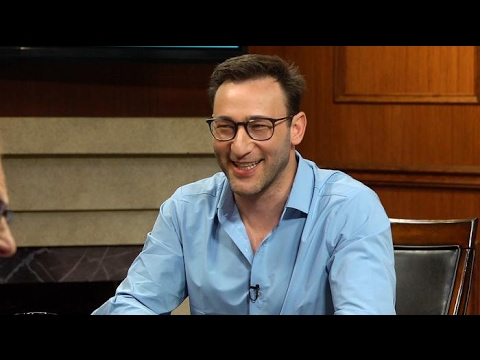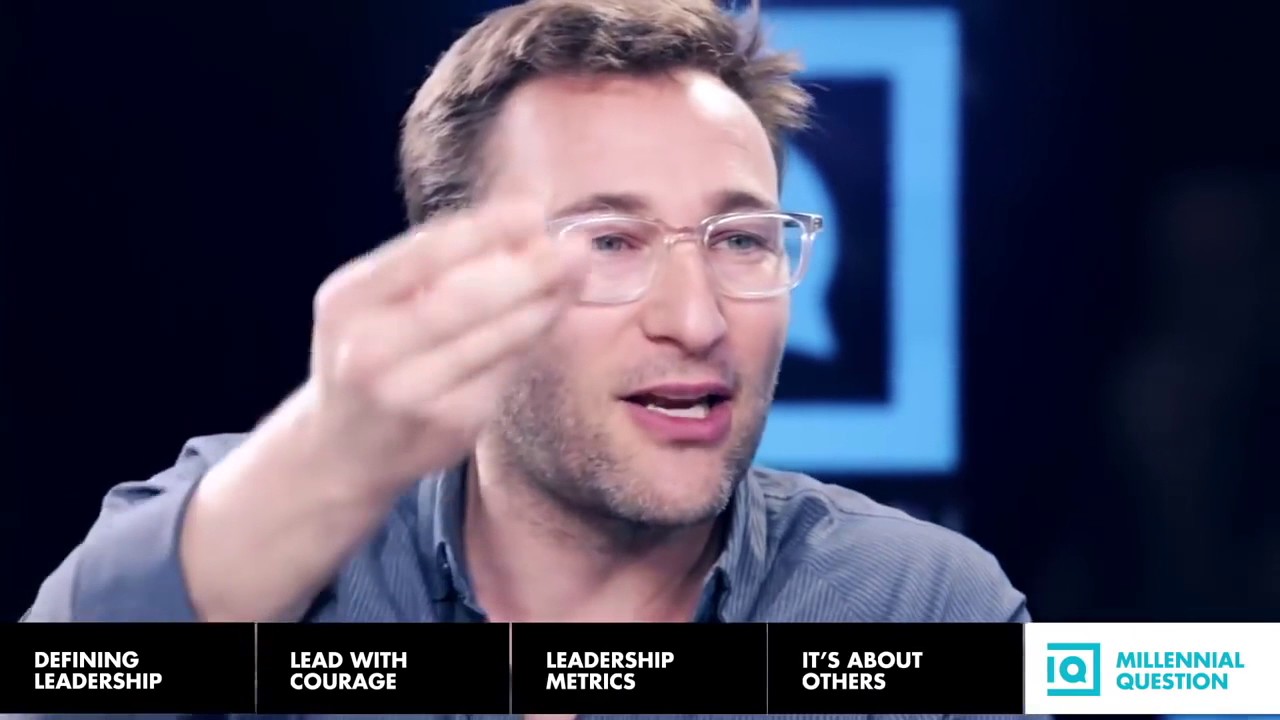BRAND MINDS 2020 SPEAKERS: Simon Sinek, Optimist and Bestselling Author
BRAND MINDS 2020 – The Growth Weekend is thrilled to announce Simon Sinek, Optimist and Bestselling Author has joined our event.
Described as “a visionary thinker with a rare intellect,” Simon is an unshakable optimist who believes in a bright future and our ability to build it together.

Leaders are the ones who have the courage to go first, to put themselves at personal risk to open a path for others to follow.
Simon Sinek
3rd Most-Viewed TED Talk of all time
In 2009, Simon delivered his first TED Talk called How great leaders inspire action.
Eleven years later, his presentation has over 50 million views and is the 3rd most-viewed TED Talk of all time.
In it, Simon describes his simple but powerful model for inspirational leadership, the golden circle and the power of WHY.
Another content that has had a long-lasting impact on the public is Simon’s 2016 interview on Millennials in the workplace. The video garnered over 80 million views in the first week and led to Simon being YouTube’s fifth most searched term in 2017.
Popularized the leadership concept of WHY
Simon defines the concept of Why as the purpose, cause or belief that drives every one of us, leaders and employees alike. His 2009 TED Talk started a movement to help people become more inspired at work, and in turn inspire their colleagues and customers.
Since then, millions have been touched by the power of WHY and Simon’s other leadership concepts: the golden circle, the circle of safety and having an infinite mindset to play the infinite game of business.
Simon on Larry King Live talking about the leadership styles of Oprah, Sir Richard Branson and Steve Jobs:
+6 million fans on social media
His ideas on business and personal growth, sustainable leadership and having an infinite mindset are shared with a growing community of over 6 million people on social media.
Leadership is not a rank or a position to be attained. Leadership is a service to be given.
Simon Sinek
His leadership model is applied globally
His unconventional and innovative views on business and leadership have attracted international attention.
From the airline industry to the entertainment industry, from finance to fashion, from big business to entrepreneurs to police forces, Simon has been invited to meet with a broad array of leaders and organizations in nearly every industry.
He has also had the honour of sharing his ideas with multiple agencies of the US government and with the senior-most leaders of the United States Air Force, Marine Corps, Navy, Army and Coast Guard.
New York Times Bestselling Author
With over 1 million copies sold, Start With Why: How Great Leaders Inspire Everyone to Take Action (2009) is widely recognized as one of the best leadership books of our time.
The book shows that the leaders who’ve had the greatest influence in the world all think, act, and communicate the same way — and it’s the opposite of what everyone else does.
The Golden Circle
Sinek discovered that there’s a pattern these leaders use for business success which he calls the golden circle. The golden circle is illustrated by three concentric circles populated by three questions: What, How and Why.
Every organization knows what they do (products, services etc), how they do it (processes, raw materials, distribution channels, production lines etc) but very few know why they do it. What’s their purpose, cause or belief? Why does this organization exist?
Leaders who are able to communicate clearly the purpose of their organization to its employees achieve long-term success. Leaders who inspire their employees instead of managing them report increased business results.
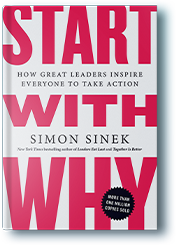
Leaders Eat Last: Why some teams pull together and others don’t (2014) is Simon’s second book on leadership.
In this book, he takes a fresh and original approach to leadership, by looking at it through the lens of cultural anthropology. The book includes real-life business case studies which come to support his observations.
The Circle of Safety
One of the innovative leadership concepts that are presented in this book is the circle of safety.
The goal of great leadership is to inspire employees to deliver their best work and support the organisation to become successful. In order to achieve their goal, leaders must implement The Circle of Safety in their organisation.
When leaders trust their employees and the employees trust their leaders, that’s when the circle of safety is achieved.
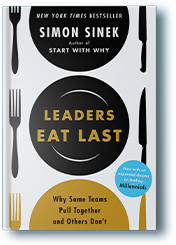
Find Your Why: A practical guide for discovering purpose for you and your team (2017) is designed to help those inspired by Simon’s message find their WHY and bring it to life in both their careers and organizations.
The book is an easy-to-follow guide that starts with discovering your personal WHY, and then expands to articulating your organization’s WHY including detailed instructions for every step of the process.
Readers also find answers to common concerns such as what to do if their WHY sounds like a competitor’s or whether or not they can have more than one WHY or what steps to take to align their work with their WHY.

The Infinite Game is Simon’s latest book and has been in the New York Time’s Top 10 Business Bestsellers for five months since its launch in 2019.
The book draws a comparison between finite and infinite games. Football is a finite game where the players are known, the rules are fixed, and the endpoint is clear. Business is an infinite game where the players come and go, the rules are changeable, and there is no defined endpoint.
Simon observed that the organizations struggling to be performant have leaders who play with a finite mindset in a game that requires an infinite mindset. The leaders who embrace an infinite mindset, in stark contrast, build stronger, more innovative, more inspiring organizations.

Where a finite-minded player fears things that are new or disruptive, the infinite-minded player revels in them.
Simon Sinek
Join BRAND MINDS 2020 – The Growth Weekend on September 26th and watch Simon Sinek speak about The Infinite Game in Leadership!
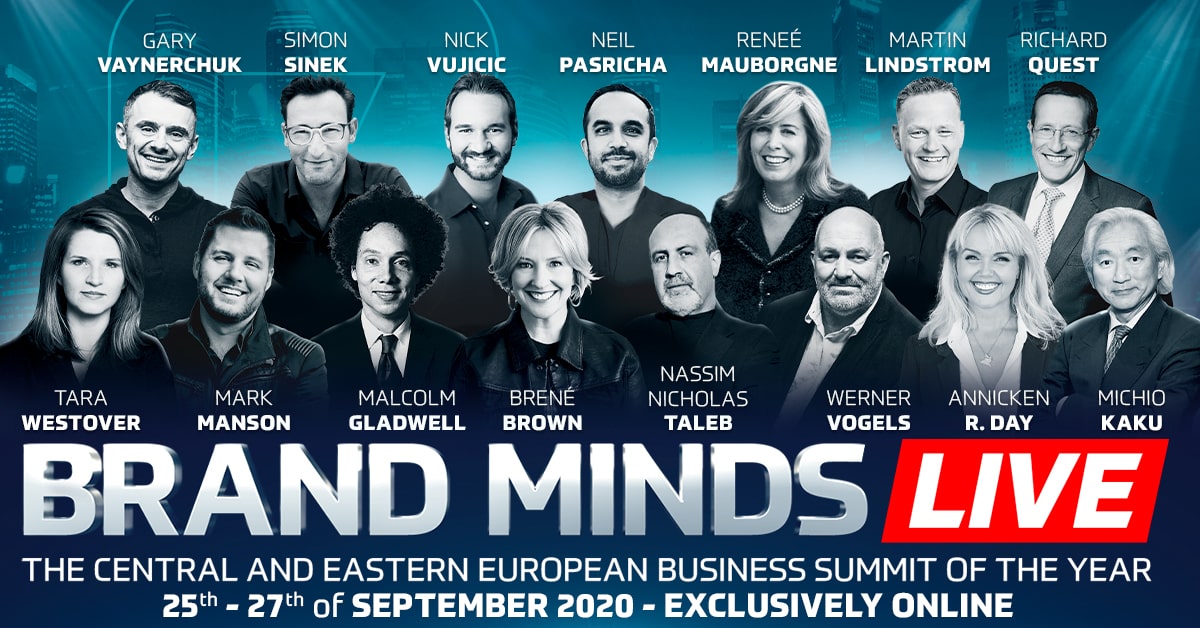
Simon Sinek: 8 Things You Didn’t Know About Him (video)
We were curious to learn more about Simon Sinek, about his own personal journey to the man we see today on stage and in YouTube videos.
This video is about sharing with you 8 things we discovered about him.
Join the Conversation
We’d love to hear what you have to say.
Get in touch with us on Facebook Group and Twitter.
The Circle of Safety – Simon Sinek’s Rule For Great Leadership
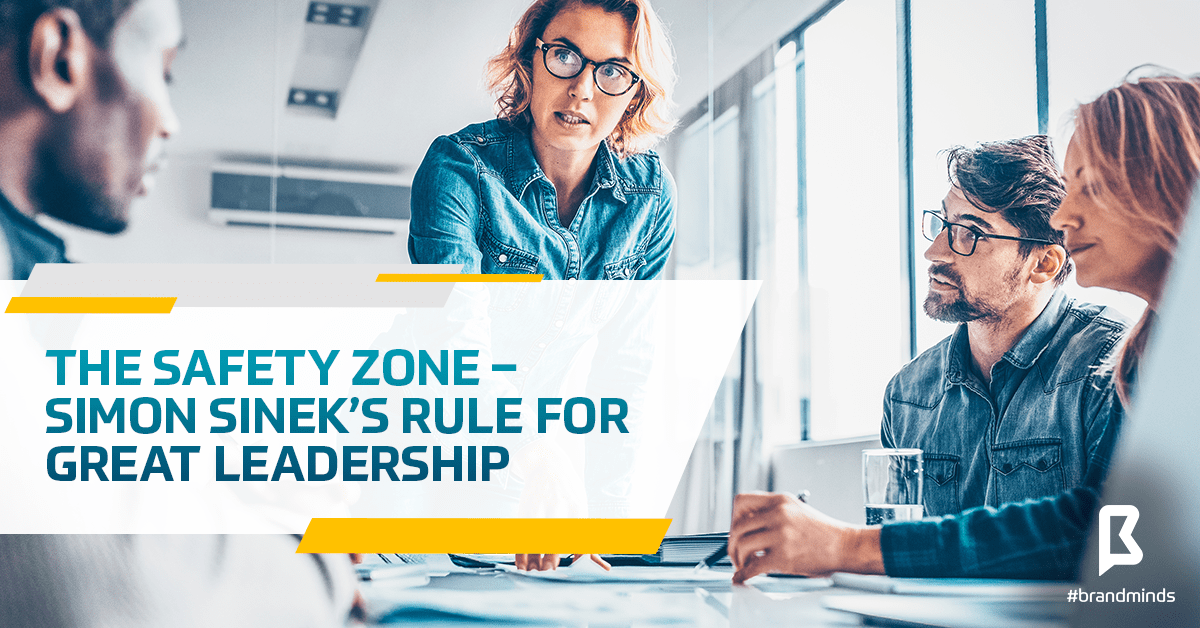
Simon Sinek – Leaders Eat Last
I recently finished Simon Sinek’s book Leaders Eat Last. It took me one hour each day for seven days to read it; it took Simon twelve months to write it. In Acknowledgements, in the last chapter of his book, Simon mentions working fourteen hours a day for many days on end. He did extensive research on the subject, talked to many people, he flew to Afghanistan and interviewed commanders in the American Air Force and the American Navy, where great leadership makes the difference between life and death.
Learn more: Simon Sinek – 8 Things You Didn’t Know About Him
Simon is a cultural anthropologist by training and it shows extensively in his book. Cultural anthropology is in my top three most interesting topics so you can imagine my enthusiasm – I couldn’t put the book down. But don’t worry, there is no scientific jargon. Simon’s writing flows effortlessly and it is easy to understand. It’s a great book and if you haven’t read it yet, I highly recommend you do so as soon as possible.
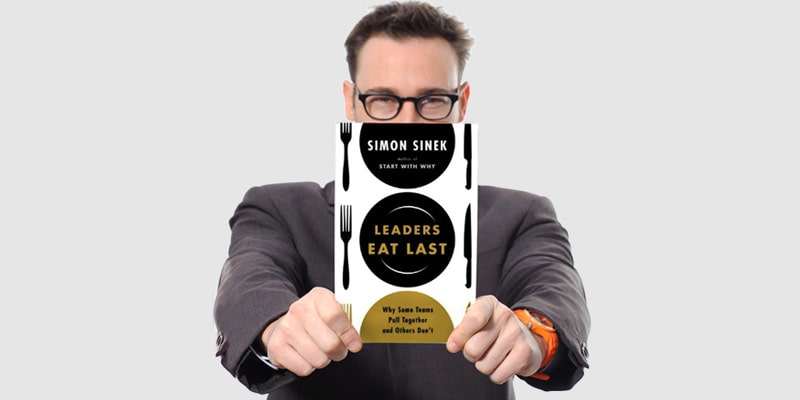
image source: trulyhumanleadership.com
Leaders Eat Last is a book on leadership; what makes it stand out from other books on the same topic is the author’s approach.
Simon Sinek takes a fresh and original approach to leadership – he looks at leadership through the lens of cultural anthropology. What makes the book very interesting is that his observations are supported by real-life business case studies.
It’s not the purpose of this article to review the book but to introduce you to one of Simon Sinek’s concepts –
The Circle of Safety.
What is The Circle of Safety?
The goal of great leadership is to inspire employees to deliver their best work and support the organisation to become successful. Notice I didn’t use the verb manage because employees don’t expect to be managed – they expect to be inspired.

What are leaders required to do to achieve this goal?
All they need to do, according to Simon Sinek is implement The Circle of Safety in their organisation.
First, let’s establish what a successful organisation is. Here is Simon Sinek’s definition of the successful organisation:
A successful organisation overtakes its competitors through innovation, inspires respect both inside and outside, has the highest level of loyalty among its employees, the highest retention rate and has the ability to overcome any challenges that may arise.
Second, in regard to the concept of safety, Simon notes the following: safety goes both ways in that the leader ensures the safety of his employees and in turn, the employees ensure the safety of the organisation.
Having said that, let’s delve into The Circle of Safety concept and discover how it serves and supports great leadership.
Leaders have one job only: to create a company culture in which employees cooperate naturally towards growing the business. That’s the safety zone: when employees come to work not for the company, but for themselves and their colleagues.
Learn more: Keeping Your Employees Happy Is More Than A Higher Paycheck
Trust the leaders, trust the employees
How do leaders create this type of company culture? By earning their employees’ trust.
The trust between the organisation and its employees is essential. To earn their employees’ trust, leaders must first empower them.

When you work with people you trust they will do their job better in order to deserve and keep your trust. These employees will show loyalty and commitment to the organisation without the need for exterior incentives like promises, financial bonuses or other perks.
When people feel appreciated by the organisation, they feel safe and relaxed; this allows them to care about and connect with their colleagues and start working as a team to support the organisation achieve success and prosperity.
Protection from outside threats
Trust means employees feel protected from threats coming from inside the organisation.
When there are no layoff threats looming over them or workplace rivalries they must fight in order to survive, employees are more prepared to protect the company from outside threats. Internal rivalries lead to the weakening of the company, making it less capable of standing up to potential dangers.

People first, revenues second
Leaders must make employees their top priority, not company sales or revenues. No financial goal should take precedence over the people. In times of business crises, Simon supports the strategy of sacrificing financial vectors to save the employees- not the other way around.
Unlike the threats from outside the company which are not in our control, leaders can control the threats from inside the organisation.
They can take steps towards eliminating intimidation, humiliation, biased attitudes, isolation, feeling useless, feeling rejected and being stressed. Workplace stress and anxiety have very serious consequences on our health and well-being- there’s no doubt about it. Statistics report a direct link between a negative workplace and a wide range of illnesses: from physical and mental fatigue to obesity, heart disease, burnout and eventually death. Increasing levels of detachment among employees are also causing low retention and engagement rates.

Lynda Gratton will teach you how to keep your employees engaged and motivated to do great work. Get your tickets today!
No safety zone means a dangerous environment for the organisation
When the organisation doesn’t provide a safety zone for its people, various case studies of prominent companies showed that it gives rise to negative feelings like paranoia, cynicism and employees with personal agendas. In short: a dog-eat-dog kind of culture where arrogance, inflating egos and fear make the rules.
When employees are left to fend for themselves, they withhold valuable information regarding an imminent threat to the organisation. The relationships between employees and leaders are weak and everyone seeks to satisfy their own interests. That’s what happened to Nokia. Nokia’s culture of status, shared fear and temporal myopia contributed to its downfall.
Leaders can fight negativity by creating a powerful culture based on a transparent set of values and beliefs. In this culture, employees are given the power to make decisions on their own because their leaders have previously shown trust and empathy. Which means building the safety zone.

A safe environment breeds innovation
It’s the natural cooperation between employees that makes the company powerful and resilient, not their products or services.
When people believe that everyone else inside the company will take care of them, they will contribute to the free exchange of information and data.
Sharing knowledge and information is what great leadership is all about
In a safe organisation, the leader is willing to share knowledge and information just as much as the next employee. Actually, it’s the leader who sets the tone and takes the first step down the path of sharing valuable information.
Numerous case studies and research data report that a favourable working environment leads to organisational stability and long-term high-level performances.
We also maintain our loyalty towards the employer, we help each other and we take pride in our work doing our jobs with passion.

A leader’s role is to set the tone
A leader’s role is to be the first who throws himself in front of danger to protect the group.
When the safety zone is in place, this doesn’t happen because it doesn’t have to. The safety zone protects him and the organisation. His people protect the company from outside dangers so the situation in which he has to sacrifice himself doesn’t arise at all.
The true social benefit of trust is reciprocity. Trust feeds itself. The organisation supports the development and growth of its employees in order for them to take on more important responsibilities.

A leader’s job is to teach and mentor his employees into becoming more competent and to earn their trust.
If the organisation doesn’t trust its people, it will monitor and surveil them, it will time their bathroom breaks and phone conversations.
Leaders rely on employees to provide firsthand information and data and employees rely on their leaders to provide direction, guidance and safety.
Join BRAND MINDS 2023 and learn how to become a better leader from global business thinkers James Clear, Nassim Taleb, Lynda Gratton, Neil Patel, Renee Mauborgne, Blair Singer, Anne-Marie Imafidon and Duncan Wardle!
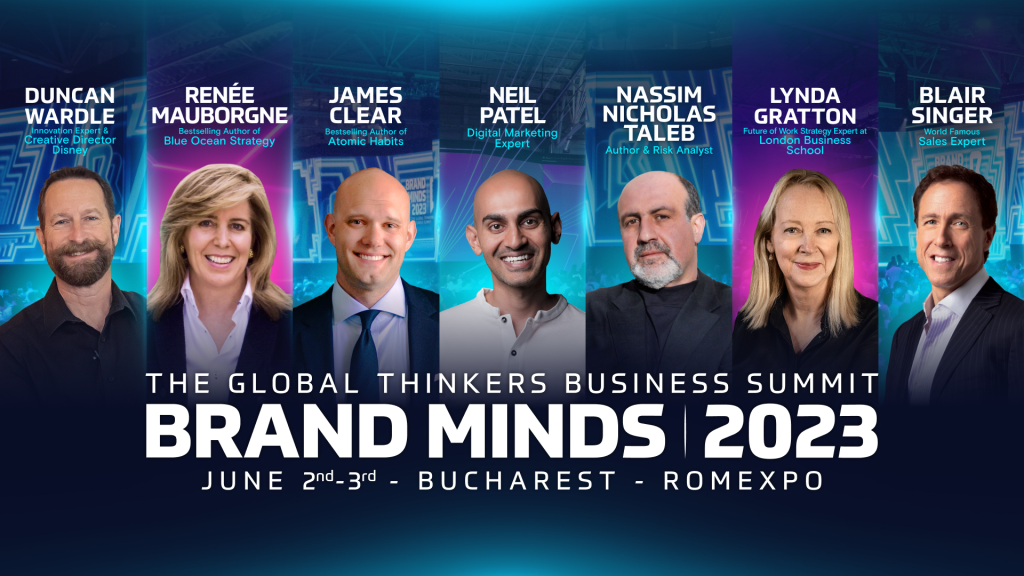
Simon Sinek: 8 Things You Didn’t Know About Him
I was curious to learn more about Simon Sinek, about his own personal journey to the man we see today on stage and in YouTube videos.
This article is about sharing with you 8 things I discovered I didn’t know about Simon Sinek.

Simon Sinek/facebook.com
Simon Sinek is a leadership speaker, a professor at Columbia University, a trained ethnographer and author of five books on the power of leadership:
Start with Why (2009),
Leaders Eat Last (2014),
Together is Better (2016),
Find Your Why (2017)
and
The Infinite Game (2018).
He flies around the world to speak at large conventions and conferences teaching leaders to improve themselves and the lives of their employees.
I was curious to learn more about Simon Sinek, about his own personal journey to the man we see today on stage and in YouTube videos.
Here are 8 things you didn’t know about Simon Sinek:
1. He was an intrapreneur in the corporate world
After graduating in cultural anthropology, Simon Sinek enrolled in law school. He quickly realized it wasn’t for him, so he dropped out of law school and entered the corporate world by taking jobs in advertising and marketing agencies.
As a marketer, he was constantly looking for a better way to do things. He heard a lot of That’s not how we do things around here, although his creativity allowed him to find new ways to accomplish tasks and deliver projects. After a few years, in 2002 he quit his ad business and started his own marketing firm.
2. He saw the pattern
Throughout his marketing career, he was fascinated by why some companies succeeded and others didn’t.
He looked at the great marketers who everyone admired and recognized that there was a pattern in which they spoke to the audience. They communicated marketing campaigns in the same way, they organized information the same.
That’s when he wrote down his observations and came up with his idea – The Golden Circle.
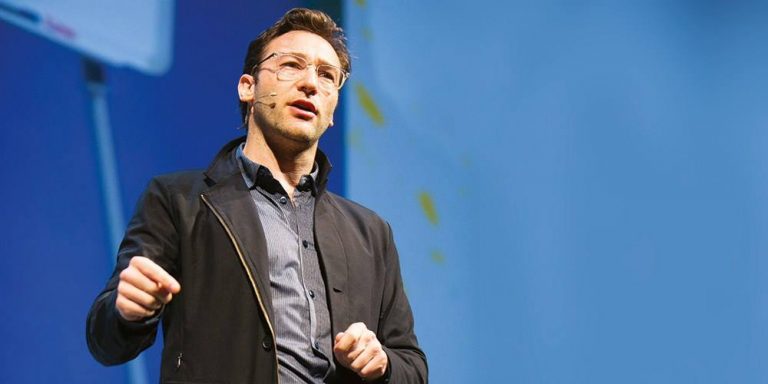
image source: facebook.com
3. He gave his first talk in a friend’s living room
The year was 2006. He started talking about his discovery in his friends’ living rooms.
What he discovered changed his life profoundly. He talked obsessively about it to his friends and anyone willing to listen.
His friends began spreading his idea to their friends, so Simon’s ideas began reaching a wider circle of people through word-of-mouth.
4. Teach Me!
Entrepreneurs and small-business owners began asking him to teach them how to discover their Why. In parallel with working at his own marketing firm, Simon began earning money on the side for teaching others how to improve their marketing campaigns and get their message across more efficiently.
5. Testing, testing…
Soon he discovered he only wanted to spread the message of the Why.
He didn’t yet know what form his endeavour would take, but he knew he had to do it. Like any scientist, he decided to test his theory. In order to do that, he needed to begin with a clean slate, so he closed his marketing firm.
He needed to prove his theory, so he started from scratch. He began looking at all the different places he could try to test his theory: small and big businesses, businesses in different industries, public and private companies, government, military, politics etc. He kept applying his theory to various organizations expecting it to fail. Only it didn’t.
6. His 2009 TEDx Talk: He didn’t seek it out
He didn’t seek out the opportunity to give a TED Talk. His message about The Golden Circle and the Why spread organically. He was approached by someone at TED and invited to give a talk on his theory. He was ready. He had been giving his speech for the past three years so the only challenge he faced at that moment was delivering it in twenty minutes instead of an hour, the normal length. He gave the best talk he could, and it made history.
To date, his speech has a viewership of 42 million views.
7. He never set out to become a public speaker
He didn’t set himself on the course to be a public speaker, it’s not a chosen profession. He does it because he believes in the message and he thinks it’s important to go and preach that message. It’s an amazing experience and he feels humbled by the large scale his message has taken.
8. Simon Sinek’s learned lesson
What do entrepreneurs do that Simon Sinek considers stupid?
It’s something he felt himself in his entrepreneurial days. He thought he had to know all the answers and if he didn’t, he thought he had to pretend that he did. Which Simon Sinek thinks it’s stupid.
The biggest lesson Simon Sinek learned in his days of being a business owner was to learn to say I don’t know, I don’t understand, or I need help.
Join the Conversation
We’d love to hear what you have to say.
Get in touch with us on Facebook Group and Twitter.
How to lead the Millennials with Simon Sinek
According to Simon Sinek, Millennials are no different when it comes to what they way, in comparison with any other generation, the only difference being that Millennials are the first generation with the guts to ask for it and to expect it.
Here are some of Simon’s ideas on how to lead the Millennials:
- Youth should reduce their exposure to technology, specifically cellphones. There is a strong correlation of addiction with technology and the dopamine cellphones release in our brains. That awareness was part of their climb to such global success.
2. In a 2012 study, Harvard research scientists reported that talking about oneself through social media activates a pleasure sensation in the brain usually associated with food, money and sex. It’s why we count the likes, it’s why we go back ten times to see if the interaction is growing, and if our Instagram is slowing we wonder if we have done something wrong, or if people don’t like us anymore. The trauma for young kids to be unfriended it too much to handle. We know when you get the attention it feels good, you get a hit of dopamine which feels good which is why we keep going back to it. Dopamine is the exact same chemical that makes us feel good when we smoke, when we drink and when we gamble. In other words, it’s highly, highly addictive…
3. They care more about the short-term gains than the life of this young human being. We care more about the year than the lifetime. We are putting them in corporate environments that are not helping them build their confidence. That aren’t helping them learn the skills of cooperation. That aren’t helping them overcome the challenges of a digital world and finding more balance. That isn’t helping them overcome the need for instant gratification and teach them the joys and impact and the fulfillment you get from working hard on something for a long time that cannot be done in a month or even in a year.
4. There should be no cellphones in conference rooms. When sitting and waiting for a meeting to start, instead of using your phone with your head down, everyone should be focused on building relationships. We ask personal questions, “How’s your dad? I heard he was in the hospital.” “Oh he’s really good thanks for asking. He’s actually at home now.” “Oh I’m glad to hear that.” “That was really amazing.” “I know, it was really scary for a while there.” — That’s how you form relationships. “Hey did you ever get that report done?” “No, I totally forgot.” “Hey, I can help you out. Let me help you.” “Really?” — That’s how trust forms. Trust doesn’t form at an event in a day. Even bad times don’t form trust immediately. It’s the slow, steady consistency and we need to create mechanisms where we allow for those little innocuous interactions to happen.
5. None of us should charge our phones by our beds. We should be charging our phones in the living rooms. Remove the temptation. We wake up in the middle of the night because you can’t sleep, you won’t check your phone, which makes it worse. But if it’s in the living room, it’s relaxed, it’s fine. Some say “but it’s my alarm clock.” Buy an alarm clock. They cost eight dollars.
6. The most important sentiments any leader can express to someone in their charge is “I’ve got your back. There’s nothing you can break that I can’t help put back together. I believe in you even when you no longer believe in yourself.”
7. We organize ourselves around the people and companies who seem to share our values, the same way our ancestors organized themselves into tribes. The best leaders are the ones who can express their fundamental why.
